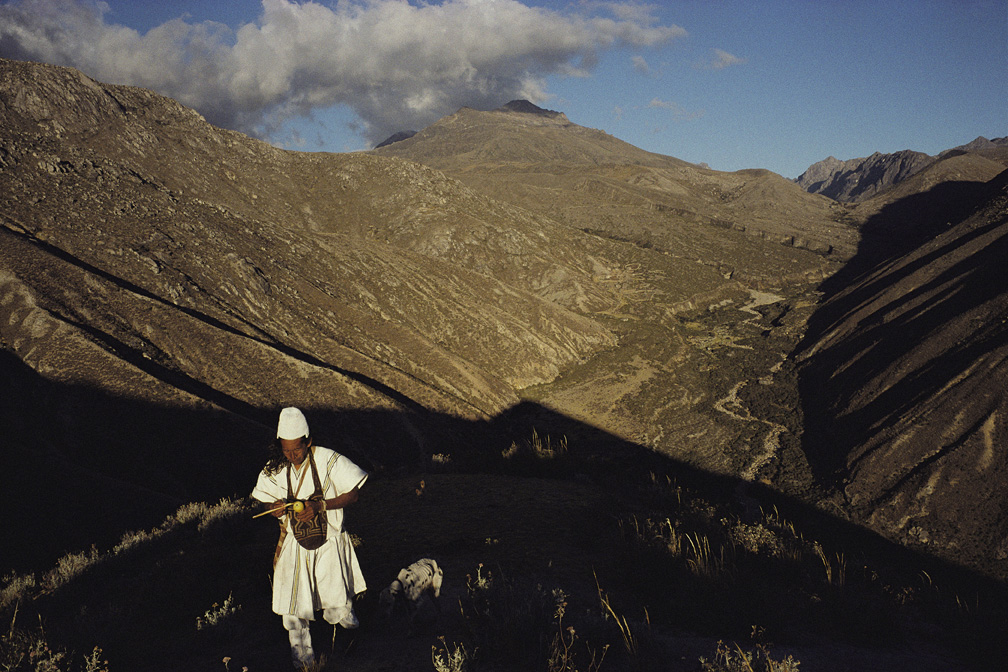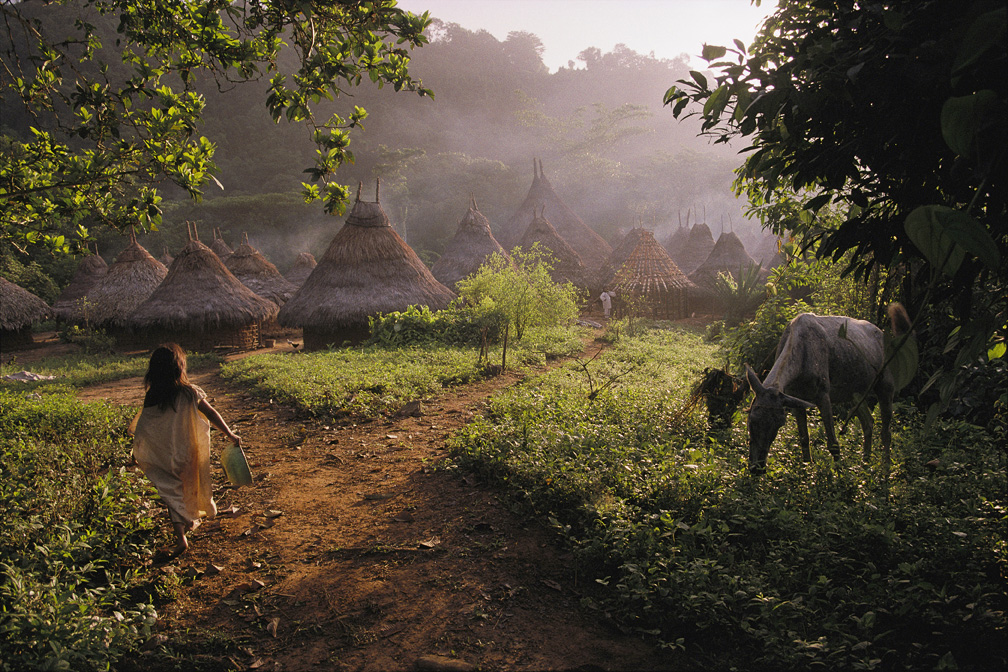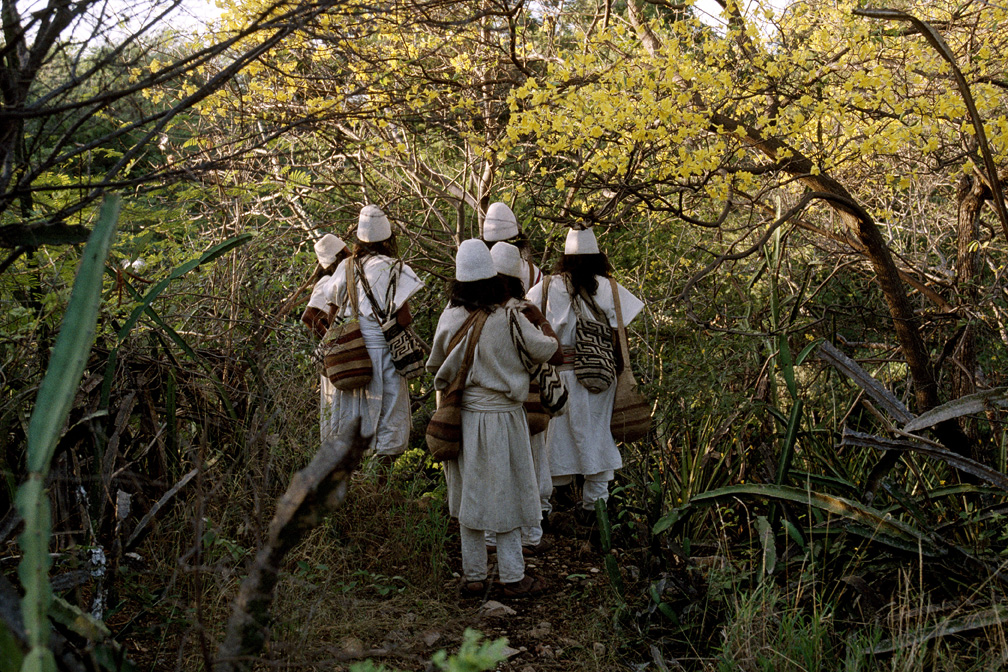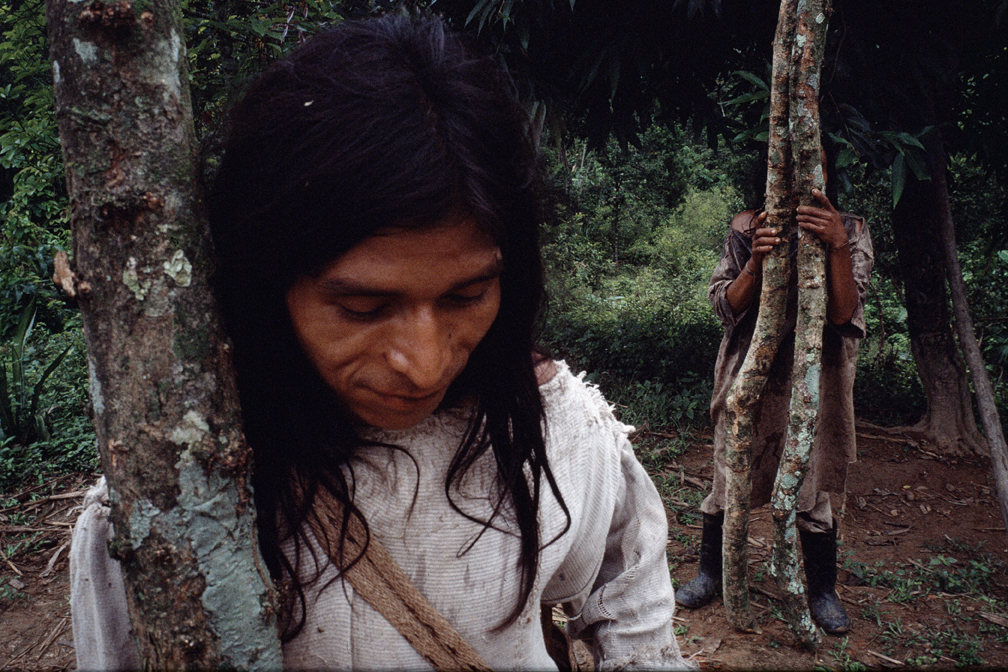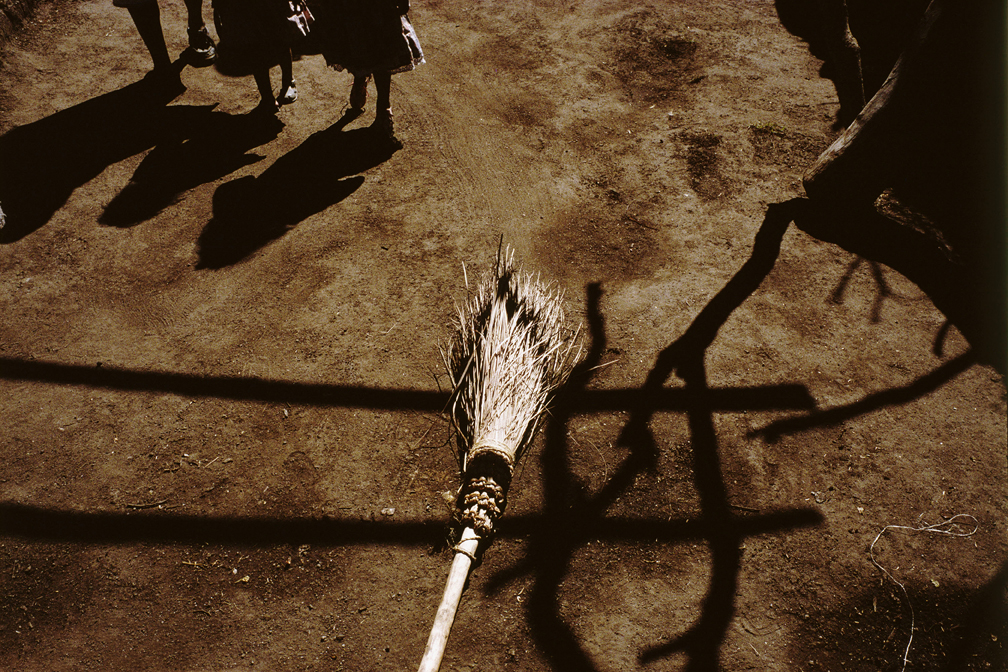Sitting amongst a group of Arhuacan males, Stephen Ferry stays calm, listening to their native tongue while interpreting, admiring and reflecting on his surroundings. He places dried coca leaves into his cheek and lets it sit, inducing both salivation and thought.
The men around him poporear, the act of grinding coca leaf with cal or lime in a poporo (a thin coconut-like seed called a totumo, which acts as the female and a long stick, which acts as the male and is used to grind the recipe), the mixture is then inserted into the cheek – an act of inseminating thought.
Benjamin, a young Arhuacan who recently turned 20 explains that the poporo is given to you when you become a man – when you choose to take on that responsibility.
The poporo is a strong symbol of the peoples of the Tayrona, which include the Kogui, Arhuaco, Wiwa, and Kankuamo indigenous groups. The groups are known for a number of reasons, of which include their discursive sensibilities, strength of culture (they have outlasted hundreds of years of colonization), environmental protection, and their use of the coca plant for thoughtful transcendence.
Stephen Ferry grew up in Cambridge, Massachusetts in the 1960s. His father, David Ferry, is a well-respected poet and translator and his mother, an English literature scholar. In college at Brown University in Providence, Rhode Island, Ferry studied Latin American History – while at the same time learning Spanish, a skill that proved essential to his future (he currently lives in Bogotá, Colombia).
It was his education of photography, however, that became his career and since the 80s he has produced photo journalistic projects throughout Eastern Europe, North Africa, the Middle East and Latin America. He has since found that he identifies strongly with those people that have been affected or are still affected by colonialism.
In 1988, Ferry documented an indigenous group on the Amazon in Brazil who were fighting against the government who wanted to build a dam. The indigenous group knew the affects of the dam – flooding to their sacred territory being the strongest issue – and heavily protested it. They stopped the project from going forth. 23 years later, the project is back and the protests have returned.
About 10 years after that project, he worked with a group in the Bolivian highlands in the city of Potosí, a long-forgotten city where, for 250 years, silver financed the Spanish empire. The city continues to mine silver, though the citizens’ cultural identities have been marred by their history.
In 2001, an editor at National Geographic hired Ferry to photograph the culture of the Tayrona people in the Sierra Nevada of Santa Marta in northern Colombia. His work for the magazine was produced relatively quickly, but for Ferry, the project had not ended. He delved deep into their culture and ended up with a project that lasted more than five years, culminating in a book that has yet to be published.
Origins of Tayrona
The Tayrona people divide the mountain range into the four cardinal directions, each group taking care of the land. It is their belief that the two mountain peaks (which are symbolically recognized in their headwear) that define the Sierra Nevada of Santa Marta are the center of the world and that their maintenance of that land acts as a sort of butterfly effect in each of those cardinal directions. In fact, the Sierra Nevada of Santa Marta is the highest coastal mountain in the world, which means that it goes from the ocean to glaciers at 5,700 meters, covers all forms of earthly terrain and serves as the source of 36 rivers.
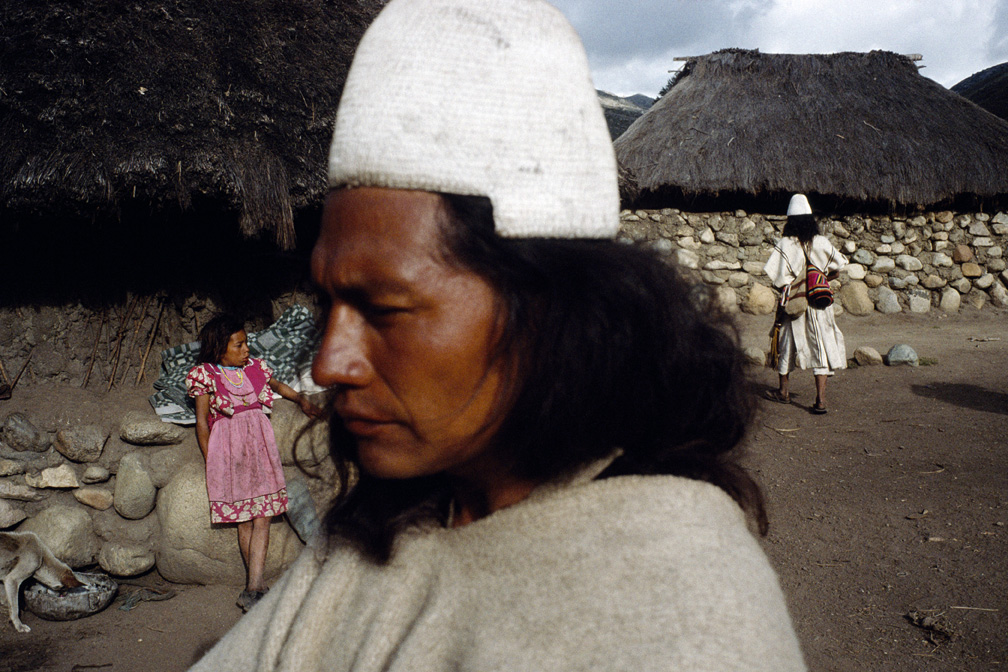 The maintenance of this land is essential to their culture and, as the indigenous groups describe, is part of their nature and has no religious meaning to them – it is simply what they do.
The maintenance of this land is essential to their culture and, as the indigenous groups describe, is part of their nature and has no religious meaning to them – it is simply what they do.
So what do they do?
They move the land. More specifically, they move plants, insects, dirt, and other earthly items to manage the ecosystem of the mountain.
“Each family unit has people at different altitudes that are constantly in a pattern of walking and exchanging – they’re nomadic people. They have tremendous skill in understanding trips and what will be the exchange that will take place and how that benefits the overall nutrition system of the people and also how it relates to how things are grown.”
Ferry continues: “They do spiritual work by taking all kinds of little matter from one point to another point – sacred points that have specific energy or importance in the ecosystem.”
This action is mainly done with the help of their weaved bags which have become a symbol of Colombian culture with business people and regular Colombian citizens wearing and using the bags on a daily basis. Their bags maintain another cultural identifier: the use of the coca plant.
Though most people associate the coca plant with cocaine, it actually originated and is still used widely today as a spiritual plant that enhances thought processes. The Tayrona people usually chew on dried coca leaves which stimulates their mind and results in them talking for hours.
“Their culture is very discursive-based,” Ferry describes. “They talk and talk and talk things through. They say that they take in things through the ears while we’re more vision-oriented.”
The result of this understanding has produced the Zhigoneshi Communications Center: a group of individuals from three of the four groups (the Kankuamos have adapted to the modern culture and no longer practice their ancient traditions). The Zhigoneshi group is held responsible for the outward communication of their beliefs in order to inform about their culture and, hopefully, change the negative environmental practices of their little brothers (the name they give to everyone not from Tayrona). They use photography and video as a source to communicate and have even created exhibitions (I work with them on traveling one of these shows) that have been presented from Paris to New York to Bogotá and more.
Before talking, however, first they meditate. This is common practice before anything that they do – to think about what they’ve done, what they’re doing, and what they’re going to do. Much of this thought is done with the mamos (mah-mos), or spiritual leaders, who spend their whole life, from birth, developing their connection and understanding with the earth.
“Thought before matter” is how Ferry defines a sort of mission statement. “I saw, for instance, a whole town, through two days of work with a mamo, where they successively and methodologically thought about all the insects through meditation. Thanking the insects, understanding the insects, understanding mentally the function of the insects, just thinking thinking thinking.”
This example shows the attention of respect that these people give toward nature. Ferry finds inspiration in this and shows the evidence of it in his images. It is obvious when viewing his photographs that this indigenous culture has a deep connection with nature; wide-open landscapes of beautiful terrain and the people who live there, not off of the land, but part of it.
When meeting an indigenous person from Tayrona, you might be pleasantly surprised. They are amiable and light-hearted with an honest and ancient wisdom. They want to teach you about their culture and are always prepared to provide an answer. Perhaps you’ll even get to chew on some coca leaves and join them in an all-night discussion.
Source : Vangardist Magazine
